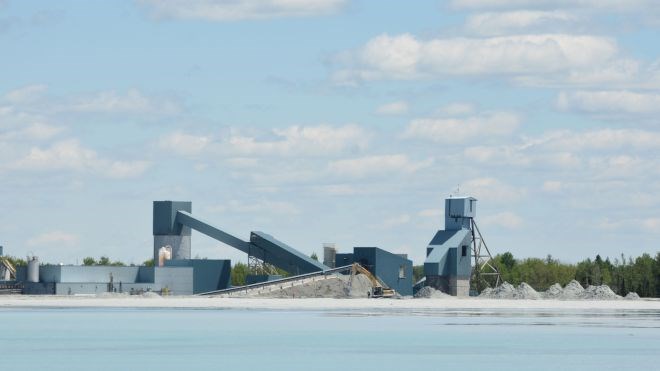Rob McEwen is so confident in the quality of his namesake company and its deposits he’s put $160 million of his own capital into their development, and is taking a salary of just $1 per year, without a bonus or options.
“So why such a big commitment?” he asked during a Sept. 7 mid-year webcast report to investors. “I’m a big believer in our future, the potential of our properties, the skill of our team, and the power of mining to make a meaningful contribution to society at large.”
McEwen is the founder, chair, and chief shareholder of McEwen Mining, which owns a number of gold and base metals properties in the Timmins area, in addition to the El Gallo Mine in Mexico, the San José Mine in Argentina, the Gold Bar property in Nevada, Project Fenix in Mexico, and the Los Azules property in Argentina.
McEwen Mining acquired the Black Fox Complex, located in Black River-Matheson east of Timmins, from Primero Mining in October, 2017. It includes the Black Fox Mine, which has produced 835,000 ounces of gold to date, and the Froome, Grey Fox and Tamarack deposits, along with the Stock Mill and the former Stock Mine.
The company is currently in the midst of a $15-million drill program at Black Fox, drilling more than 80,000 metres to date. At the program's conclusion, 100,000 metres in total will be completed.
The Lexam package, which includes the previously operating mines Buffalo-Ankerite, Fuller, Paymaster, and Davidson Tisdale, are all located within a few kilometres of Timmins. McEwen acquired Lexam VG Gold in a friendly takeover in February, 2017. Buffalo-Ankerite, Fuller and Davidson Tisdale are 100 per cent owned by McEwen Mining, while the Paymaster property is a joint venture with Goldcorp (61 per cent McEwen Mining, 39 per cent Goldcorp).
Chris Price, the business manager at the Black Fox Mine site, said the company has struggled to extend the life of the Black Fox Mine beyond two years, but the company has a “huge opportunity” to convert the complex’s indicated resource into reserves.
Black Fox Mine has 576,000 ounces, Froome has 181,000 ounces, Tamarack has 126,000 ounces of gold equivalent, and Grey Fox has 465,000 ounces, while exploration continues around the former Stock Mine.
“The strategic plan for the Ontario operations is to bring four to five mines into operation to fill the capacity of the centrally located mill,” Price said.
“How are we doing this? Convert more of the current Black Fox resource to reserve to extend the mine life both laterally and at depth, continue to mine the Black Fox current reserves into 2020, which will allow us to bring the Froome project into full production by late 2019 and early 2020, while we continue to grow the resource at both the Froome main zone and the footwall zone.”
The company has also developed a plan for the Tamarack and Grey Fox zones.
It's additionally reducing operational costs through energy conservation initiatives, implementing automated ventilation, upgrading the backfill plant, introducing engineered backfill walls, and monitoring gas levels remotely. That brings the total savings to $63 per ounce, or an overall eight per cent decrease.
The Lexam properties contain 1.4 million measured and indicated ounces of gold, and the company is currently working to confirm and validate historically reported reserves, noted Nigel Fung, McEwen’s director of mine planning.
Of the four properties, Fung said Fuller is the “most exciting,” because it has the shortest leadup to production, which McEwen expects to reach in 2021.
“The Fuller Mine is essentially ready to be mined as soon as it is permitted and dewatered,” Fung said.
Between 1986 and 1989, a previous owner built more than five kilometres of underground development, saving the company more than $20 million in capital, in today’s cost value, he added.
It already has a functional portal, an access road, a ramp, and air raises that descend from surface to the 650-foot level. There are also existing access tunnels on the mining levels and ore sills that provide access to the stopes, which remain unmined.
Later this year, McEwen expects to publish a preliminary economic analysis, followed up by a feasibility study, which will include a bulk sample meant to “justify mining Fuller within the next 36 months,” Fung said.
“Once Fuller is started, we will repeat the process for Davidson Tisdale, then Paymaster and Buffalo-Ankerite, with the aim of bringing the mill feed at Black Fox mill up to its rated capacity for the years to come,” he said.
McEwen said ongoing exploration suggests the company’s future mines would have longer mine lives, lower production costs, better grades and increased annual production.
“We have valuable assets, we have a strong team managing those assets, and these assets provide us promising upside,” he said.




